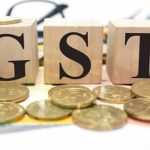New Delhi, Sept 04: India’s long-term energy demand is projected to grow at approximately 6 percent annually until 2030, driven by sustained economic expansion and emerging demand sectors such as electric vehicles, data centres, and green hydrogen.
The power sector has experienced robust demand growth between 7.7 percent and 9.4 percent from FY22 to FY24, bolstered by a post-COVID GDP rebound. The government targets 100 GW of new thermal capacity by FY32, with over 33 GW currently under construction and private players anticipated to contribute roughly one-third of future thermal capacity additions.
While renewable energy and storage are set to lead future capacity growth, thermal power will continue to be critical for providing stability and meeting base-load requirements. Consequently, the generation mix is expected to evolve, with the share of non-fossil sources rising from 25 percent in FY25 to over 35 percent by FY30, primarily driven by solar and wind capacity.
Key factors enabling this growth include reforms strengthening discom finances, ensuring fuel security through domestic coal supply (which has grown at a 9 percent CAGR over the last five years), and declining storage costs.
Furthermore, Plant Load Factors (PLFs) for thermal plants have improved significantly from 56 percent in FY20 to 70 percent in FY25, and Aggregate Technical and Commercial (AT&C) losses have decreased to 15-16 percent in FY22-24.







